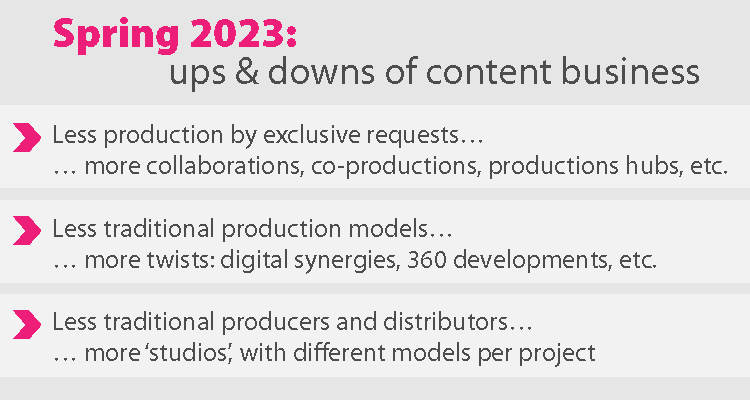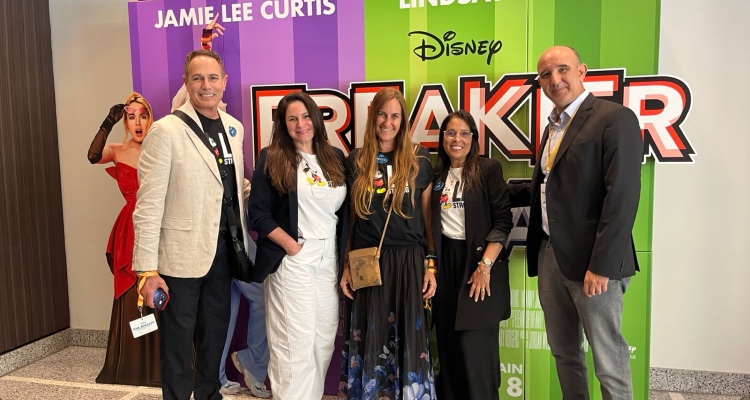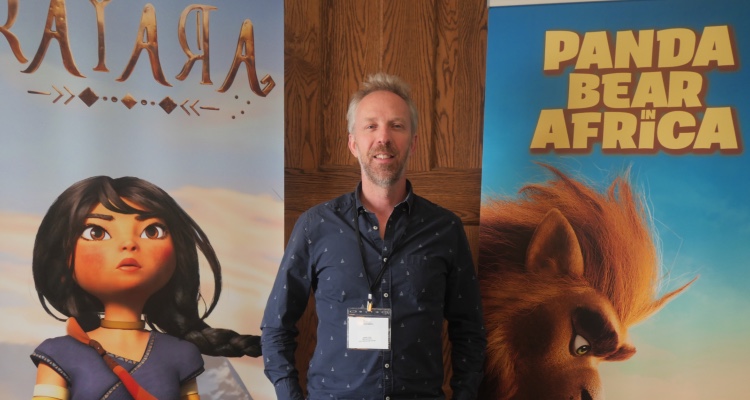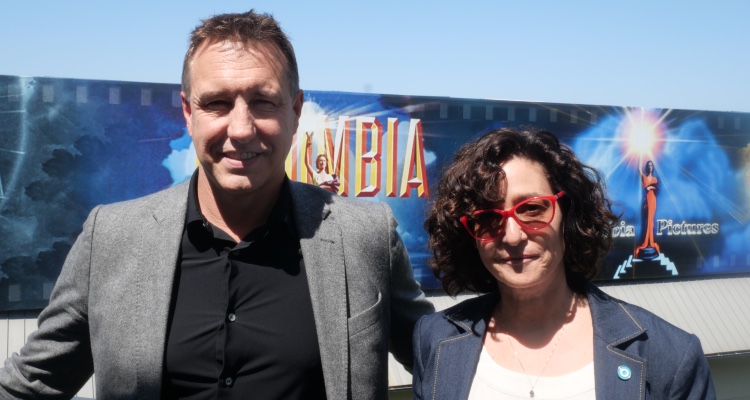The spring of the content market is held in France. Series Mania takes place on March 21-23 in Lille, while MIPTV is held in Cannes on April 17-19. The two events are organized for the first time with a full format after the pandemic, and taking care of a business that changes at every quarter. What is the main new thing? There is less production by exclusive requests, all rights, as it was the dominant model so far. We see more collaborations, productions hubs, pools, especially co-productions. This is an alliances time.

To produce is more and more expensive, while broadcasters and streamers have less budgets, so creative ‘twists’ are required. Recently, the streamers were the ‘customers’ that most required exclusive original productions, but now even they, need to be open to sharing formulas to afford production. This is already touchable in various European territories, especially the big ones.
The ‘studios’ model appears as a good response for this scenario: they are the evolution of production houses to service centers, very flexible with different business models and partners per project. They can create a chain of partners and screens, depending on their main customer needs. Even many international broadcaster distributors are moving to ‘studios’, below the concept that they produce not only for their traditional screens, but also for third parties. In Spain especially, we see a strong pole of this type of companies: The Mediapro Studio, Buendia Studios, Secuoya Studios, etc. They are emerging and taking relevance through the screenings, events, parties of the conventions.

At the same time, the different tips of ‘twists’ are more and more significant in the content arenas: 360 developments, YouTube and other social media synergies, eSports and gaming, licensing, branded content, podcasts, NFTs, Live shows, toys, etc. All are good to share costs and expand revenues. It is not casual that now many of the main new kids & teen properties, are based on Youtube channels, songs.
What more can be said about streamers? The main recent trend has been the move from SVOD to AVOD/FAST systems, as another search for better monetization. The core business is moving from subscribers to advertisement, again as in the old times. The big titans —Netflix, etc.— are launching AVOD systems, but above all most of the new platforms that enter the market, prefer AVOD or FAST models.
The steamers also are reducing many of their content projects, especially the high-budget fictions, compensating with more episodes of the mid-range ones. When they are interviewed, they stress there is no fall but consolidation, that original content is more important than ever. But their providers are not calmed with these strategies. The alliances keep more projects.

Other new veins? This year we see at the content events, a new type of player: the investing funds, just taking the financial side of production ventures. They make focus on content as it could be sports, etc. They analyze many projects, take some deeper and finally invest in a portion of them, waiting for good ROIs. With traditional budget reductions, they can be key players from now. Who learns to deal with them faster and better, will gain market assets.
Second, there are convergence opportunities, for instance between content and Pay TV industries. In Latin America, some pay TV players are launching an ‘XVOD’ model, which means to feed cable operators with volume of hours to make up their own AVOD platforms. Also, the ISPs —Internet Service Providers.— are emergent players, which want to add video to their operations, and generally they need a whole solution, content and platform. They are many, there 5-6 ISPs per every pay TV operator, worldwide.







